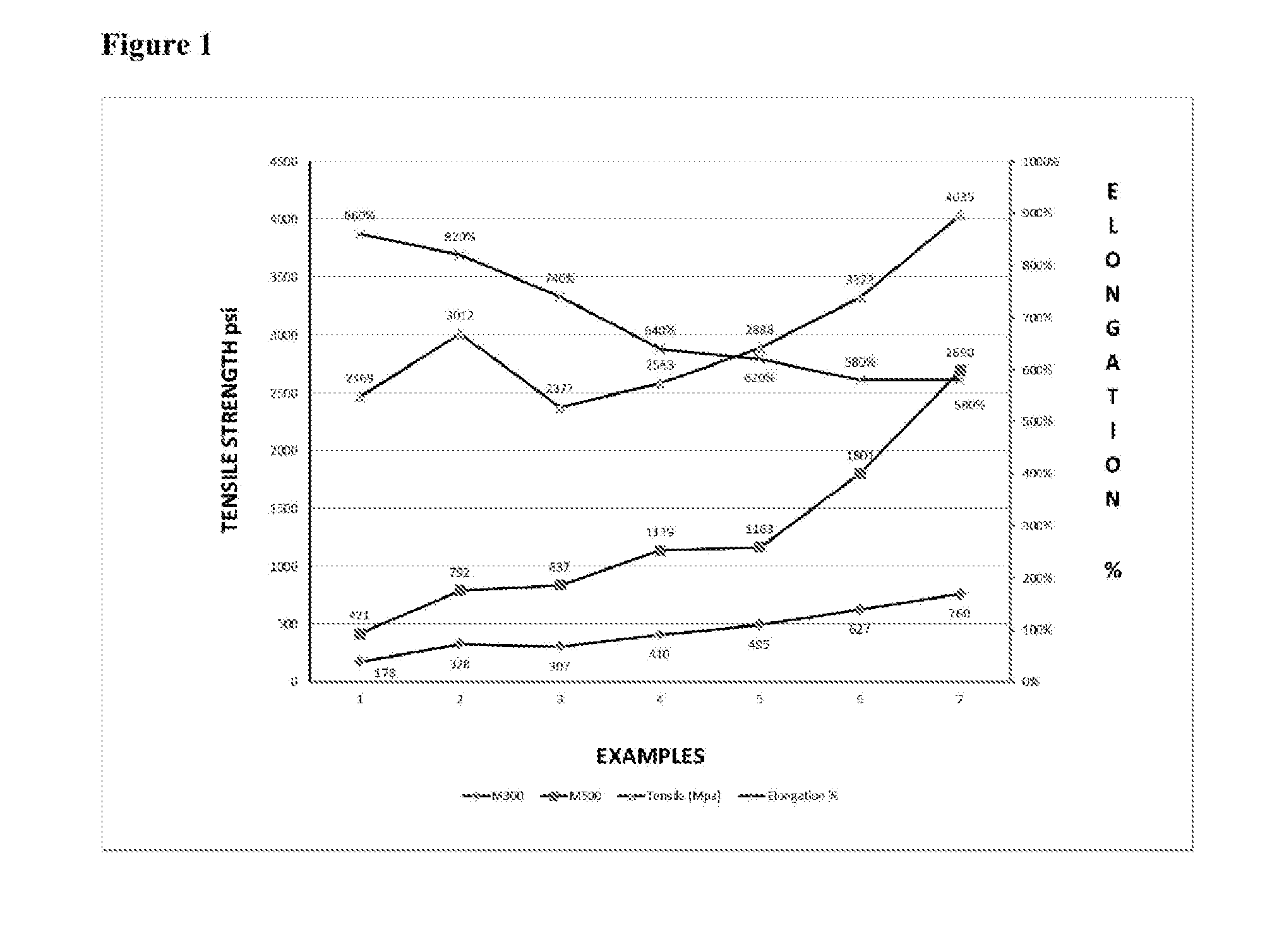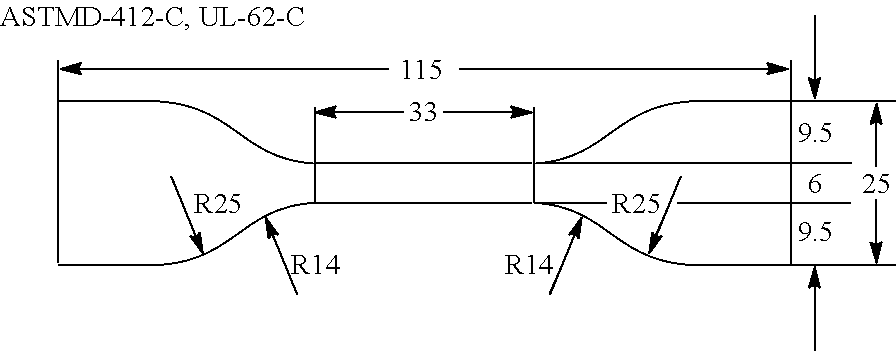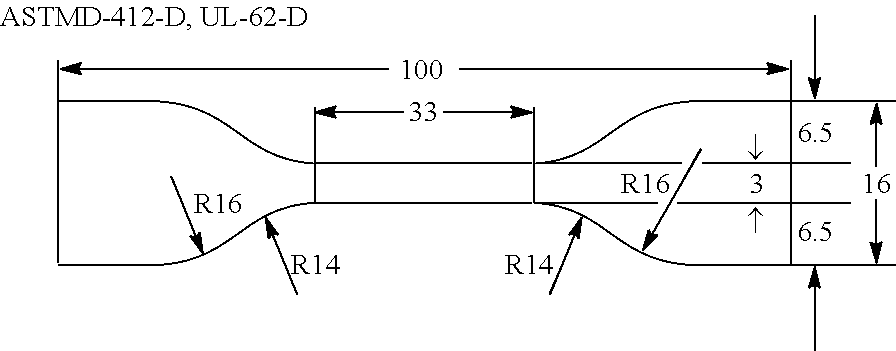Elastomeric film-forming compositions and articles made from the elastomeric film
a technology of elastomeric film and composition, which is applied in the direction of molds, domestic objects, synthetic resin layered products, etc., can solve the problems of affecting the use of gloves. , to achieve the effect of improving properties
- Summary
- Abstract
- Description
- Claims
- Application Information
AI Technical Summary
Benefits of technology
Problems solved by technology
Method used
Image
Examples
examples
[0198]The invention will now be described in further detail with reference to the following non-limiting examples. All testing procedures are shown in the Testing Procedures section, and the results of these tests are shown. All tables of compositions and test results are shown in the Tables section.
General Procedure
[0199]In the examples set out below, the following general procedure was utilised to produce elastomeric films, and gloves in particular. The general procedure was also used to demonstrate the impact (if any) that certain processing conditions and components of the elastomeric film forming compositions have on the quality of multilayer elastomeric films produced.
[0200]The following general procedure was followed for the all the Examples (1-7) described below.
1. Washing
[0201]The formers are subjected to pre-washing, so as to be clean of any remaining residues following removal of a glove previously made on the former. The formers are cleaned in mild acid / alkali and hot wa...
examples 1 and 2
[0225]These Examples demonstrate that single or multi-layer gloves (1-15 layers) can be made using the General Procedure outlined above. The gloves were made using the compositions outlined in Table 2 below. In these Examples, the copolymer used was prepared as described above, having a carboxylation level of 0.4%.
TABLE 2Example12Copolymer*100100Zinc Oxide36Sulphur11.5Accelerator ZDBC1.51.5TiO21.51.5Antioxidant22Wax22NH4OH0.480.40Surfactant0.3750.75KOH11*Level of carboxylation0.40.4
[0226]The glove produced using the above formulation and conditions stated earlier was soft and felt like glove made out of natural polyisoprene material. However the modulus and elongation were better than glove made of natural polyisoprene. The film was uniform and no weak spot or pin holes noticed. The glove thickness varied from 0.05 to 0.11 from cuff end to the finger tip.
examples 3 to 7
[0227]These Examples demonstrate that single or multi-layer gloves (1-15 layers) can be made when using a different composition to that used in Example 1 above. In these Examples, the copolymer used was prepared as described above, having a carboxylation level of 0.4%. The copolymer was blended with a second elastomer. The blend consists of 20% to 95% nitrile butadiene rubber latex (these Examples used Synthomer Type X3000 which is commercially available from Synthomer, Nippon Zeon, Khumho, LG, NanTex or other material of near equivalent specifications may be used). The copolymer used was as described above, having a carboxylation level of 0.4%.
TABLE 3Example34567Copolymer*806035255Second Elastomer2040657595Zinc Oxide32222Sulphur1111.51.5Accelerator ZDBC1.51111TiO21.51.51.51.51.5Antioxidant22222Wax22222NH4OH0.40.40.40.40.4KOH11111Surfactant0.750.750.750.750.75*Level of carboxylation =0.40.40.40.40.4
[0228]The film was uniform and no weak spot or pin holes were observed. The glove thi...
PUM
| Property | Measurement | Unit |
|---|---|---|
| thickness | aaaaa | aaaaa |
| tensile strength | aaaaa | aaaaa |
| elongation to break | aaaaa | aaaaa |
Abstract
Description
Claims
Application Information
 Login to View More
Login to View More - R&D
- Intellectual Property
- Life Sciences
- Materials
- Tech Scout
- Unparalleled Data Quality
- Higher Quality Content
- 60% Fewer Hallucinations
Browse by: Latest US Patents, China's latest patents, Technical Efficacy Thesaurus, Application Domain, Technology Topic, Popular Technical Reports.
© 2025 PatSnap. All rights reserved.Legal|Privacy policy|Modern Slavery Act Transparency Statement|Sitemap|About US| Contact US: help@patsnap.com



